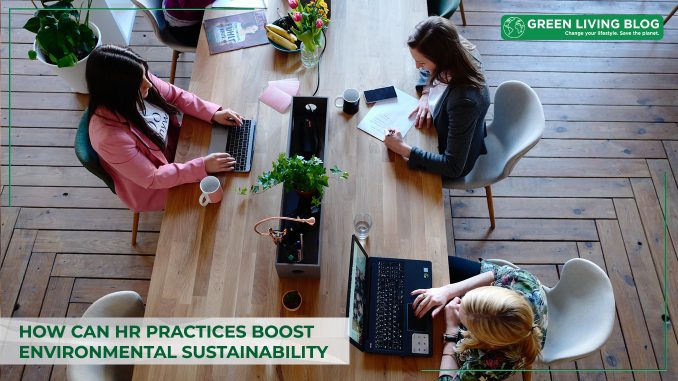
Environmental sustainability implies acting and implementing policies to ensure that the environment is maintained, leading to the preservation of natural resources and ecosystems, and ultimately ensuring that the comfort of all living things can be sustained for generations to come.
Environmental sustainability is more than a movement; it is a way of life and should be treated as such, given that there should be no end to ensuring that the environment stays conducive.
There are many advantages of environmental sustainability, some of which include:
- Preserving natural resources for present and future generations potentially improves living standards across generations.
- Reducing the cost of living and business sustainability by reducing resource consumption.
- Protecting the ecosystem, reducing climate change, and reducing pollution create a healthier environment.
- Reducing the impact of natural disasters on the environment.
- Promoting innovation and green technology.
Enjoying these advantages will require a joint global effort. Therefore, individuals, nations, businesses, and organizations all have a huge role in promoting sustainable practices and prioritizing environmental care.
Practices That Boost Environmental Sustainability

The 3Rs
This consists of the three basic steps of minimizing waste by reducing, reusing, and recycling when possible. In this case, food waste can be used to fertilize plants, while glass, metal, plastic, and paper waste can be used to recreate other materials even after their first use. For instance, paper waste in offices can be reused for paper boards, newspapers, paper packaging, etc. The office will need to be conscious of gathering used paper waste and reselling it to recycling companies. This can also help to generate income for them.
Energy Conservation
This is the continuous implementation of energy-saving habits and technology. These habits can be implemented as individuals and as a group. For instance, at home and in offices, turning off devices and appliances helps conserve energy by reducing carbon emissions.
Fostering an eco-friendly everyday life
As mentioned earlier, environmental sustainability goes beyond one or two activities; every activity should be geared towards living an environmentally sustainable lifestyle, and most of our everyday activities do not permit this. Many everyday activities like transportation and water usage cause the environment to deplete in health. To reduce these negative effects, carpooling, water recycling, electric car usage, and public transport usage should be promoted to decrease pollution.
Investing in Environmental Sustainability
The environmental sustainability cause is very important and has a long-term effect on generations and, therefore, needs all the backing it can get. Governments and organizations can create investments in this area where people can benefit financially and holistically from fostering environmental sustainability.
Advocates should be raised and supported
There are currently lots of individuals, governments, and organizations who are pushing environmental sustainability by educating individuals or creating innovative sustainable options for daily living. These advocates must be protected and supported as they have played a pivotal role in driving positive environmental changes and safeguarding the planet’s future. In addition, other advocates can be raised for quicker and more efficient work to be done. These practices guarantee a healthy environment and have a long-lasting effect if they are done efficiently.
What is the Role of an Organization in Environmental Sustainability?

All businesses and organizations, no matter the size, have a vital role to play in fostering environmental sustainability.
Firstly, these businesses and organizations are major users of materials that deplete the quality of the environment. Therefore, a huge part of the effort in promoting environmental sustainability must come from them. To do this, they must consciously ensure that their staff are team players in fostering environmental sustainability, given that they are the ones who make up the organization or business.
As much as every staff member in the company can do their research and implement sustainable practices in their own way, it will be more effective if it is a collective effort embedded into the organizational structure and created as a work ethic. It is the job of the human resources department to facilitate and integrate sustainability initiatives throughout the company, fostering a culture of environmental responsibility and providing the necessary support, training, and resources to make it a core part of the company’s identity.
How Can HR Boost Environmental Sustainability?

HR is a vital department in every organization that consists of employee relations specialists, a talent acquisition team, a compensation and benefits team, and HR generalists. All these professionals come together to ensure that the workforce of the organization or business is effectively managed, supported, and engaged to contribute to the organization’s success and the well-being of its employees and to ensure compliance with labor regulations and laws. Having this much influence, here’s how HR can boost environmental sustainability.
Organize training and educational sessions on the importance of environmental sustainability
As mentioned earlier in this article, environmental sustainability becomes more effective when it becomes a collective effort, yielding a more long-lasting and evident result on the environment. It is the job of HR to organize these learning sessions with efficient and knowledgeable educators who can relay the effects of environmental sustainability and the part that each person must play understandably.
Embed Environmental Sustainability regulations in the work ethics
While a liberal work environment can promote innovation, the organization needs some ground rules to function, and it is the job of HR to ensure that these rules are created and implemented. Knowing this, HR oversees discovering what part the organization can play in ensuring environmental sustainability and embedding it into the organization’s working rules. Doing this efficiently and professionally makes the staff more in tune with the cause and even turns it into a habit.
Lead by example
HR is like the elderly sibling in every organization that everyone looks up to. The first and best way to educate staff about environmental sustainability is to lead by example. By doing this, the other staff can understand the importance of environmental sustainability and be more cooperative about the regulations created and implemented by HR.
Closing Thoughts
In conclusion, as an HR professional, it is important to keep up with environmental sustainability trends and how best to communicate with staff in an ever-changing work environment, and websites like Humanresource.com provide valuable resources for staying informed about the latest HR practices and environmental sustainability initiatives, helping HR professionals to adapt and foster a culture of environmental responsibility within their organizations.
![]()
Author Profile
- Online Media & PR Strategist
- Blogger and Educator by Passion | Senior Online Media & PR Strategist at ClickDo Ltd. | Fascinated to Write Lifestyle Blogs in News & Education I have completed a journalism summer course at the London School of Journalism and manage various blogs.
Latest entries
 LeisureApril 16, 202510 Best Green UK Hotels for Eco-Tourists
LeisureApril 16, 202510 Best Green UK Hotels for Eco-Tourists Best practicesApril 14, 20258 Best Ways to Reduce Your Carbon Footprint
Best practicesApril 14, 20258 Best Ways to Reduce Your Carbon Footprint Green Expert GuidesMarch 28, 2025Lisbon Living: Where Sustainable Charm Meets Urban Energy
Green Expert GuidesMarch 28, 2025Lisbon Living: Where Sustainable Charm Meets Urban Energy EnvironmentJanuary 21, 2025Buying Eco-Friendly Homes: 6 Eco Questions to Ask Your Real Estate Agent
EnvironmentJanuary 21, 2025Buying Eco-Friendly Homes: 6 Eco Questions to Ask Your Real Estate Agent






Leave a Reply
You must be logged in to post a comment.